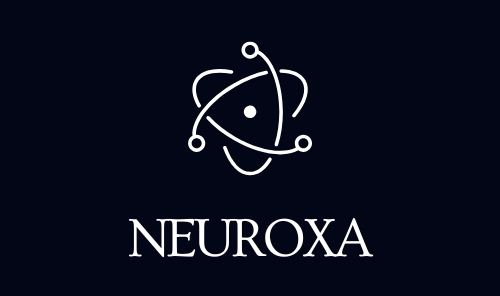Introduction: The Impossible Grading Workload
For educators, grading written assignments is the single most time-consuming and exhausting task outside the classroom. Current research shows that teachers spend an average of 9.9 hours per week—more than a full workday—marking assignments. Almost two-thirds (62%) of teachers identify grading as one of the worst aspects of their job, with one-third reporting they have considered leaving the profession due to this overwhelming burden.
- Introduction: The Impossible Grading Workload
- Section 1: The Case for AI in Assessment: Consistency and Speed
- Section 2: The Top 5 AI Grading Tools for Educators (2025)
- Section 3: The Educator’s Final Say: The Role of Human Review
- Section 4: The Academic Integrity Question: AI Plagiarism Detection
- Conclusion: The New Definition of Quality Feedback
The problem isn’t just the time spent; it’s the quality of feedback. Providing the detailed, personalized, and actionable feedback that actually helps students improve would require an unmanageable 25–40+ extra hours per week. This forces teachers to choose between their personal lives and giving students the high-quality feedback they deserve.
The solution is not to grade less, but to grade smarter. Modern AI Essay Grading Tools leverage Natural Language Processing (NLP) and custom rubrics to automate the repetitive aspects of assessment, reducing grading time for a single essay from an average of 10 minutes to as little as 30 seconds. This process is rubric-aligned, consistent, and delivers immediate, specific feedback that enhances student learning outcomes by up to 30%.
Section 1: The Case for AI in Assessment: Consistency and Speed
AI fundamentally transforms the feedback loop, shifting the emphasis from assessment of learning to assessment for learning.
AI Grading: Benefits for Teachers and Students
| Factor | Traditional Manual Grading | AI-Powered Grading (2025) | Impact |
| Grading Time | Avg. 10 minutes per essay | 95% time reduction (approx. 30 seconds per essay) | Saves up to 10 hours per week, reducing burnout. |
| Feedback Quality | Often generic or focused only on grammatical errors due to fatigue. | Highly personalized, rubric-aligned, and specific (e.g., “Your thesis is strong, but the third body paragraph lacks supporting evidence from Source B”). | Students receive actionable guidance for targeted revisions. |
| Consistency | Susceptible to human biases (fatigue, handwriting, unconscious bias). | Objective scoring based purely on custom rubric criteria, ensuring fairness. | Improves grading equity and reliability. |
| Turnaround Time | Days to weeks | Instantaneous | Students can immediately apply feedback while the content is still fresh in their minds. |
Section 2: The Top 5 AI Grading Tools for Educators (2025)
These platforms utilize advanced AI to analyze content, structure, coherence, and grammar based on the instructor’s specific criteria. Most offer generous free tiers for individual educators.
| Tool Name | Key Feature & Best For | Integration & Pricing | Time Savings (Reported) |
| 1. EssayGrader | Tailored specifically for essay evaluation; supports custom rubrics aligned with state standards (e.g., STAAR, AP). | Google Classroom, Canvas, Bulk Uploads. Free Plan available. | Reduces time by up to 95%. |
| 2. CoGrader | Rubric-based AI grader focused on objective scoring and detailed feedback; strong emphasis on academic integrity. | Google Classroom, Canvas, Schoology. Free Plan available. | Significantly cuts down grading time while ensuring fairness. |
| 3. Gradescope (by Turnitin) | Best for large-scale institutional use; automates grading of various formats, including STEM and long-form written work. | Web, Mobile, Canvas, BlackBoard. Custom institutional pricing. | Efficient workflow for large classes and cross-disciplinary use. |
| 4. Brisk Teaching | Free Chrome extension providing instant, quick feedback in seconds; excellent for formative assessment and drafting support. | Chrome Extension, Google Docs. Free for teachers. | Immediate feedback (Glow & Grow, Next Steps) during the writing process. |
| 5. Class Companion | Designed for iterative feedback; acts as an AI teaching assistant that students interact with before final submission. | Web platform. Free for teachers. | Shifts focus from grading to revision and improvement. |
Section 3: The Educator’s Final Say: The Role of Human Review
It is critical to understand that AI does not replace the teacher; it acts as a highly efficient first-pass assessment assistant. The most effective workflow is a collaboration between the machine’s efficiency and the teacher’s expertise.
Best Practices for Responsible AI Grading
- Customize the Rubric: Never use a generic AI-generated rubric. Upload your own specific, detailed rubric (aligned with your learning objectives) to the AI tool. The AI can only grade what you tell it to look for.
- Review the Edge Cases: Always review assignments where the AI’s score or feedback seems anomalous (too high or too low). AI sometimes struggles with sarcasm, complex metaphor, or truly novel, creative approaches.
- Focus on Higher-Order Feedback: Use the time you saved on mechanics (grammar, word count) to focus your human input on higher-order thinking—the originality of the argument, the ethical implications, or the connection to class discussions that the AI cannot contextualize.
- Promote Iteration: With instant feedback, assign drafts that the students must run through the AI grader first. This forces them to engage with the AI feedback and revise before the final, human-graded submission, leading to much better final products.
Section 4: The Academic Integrity Question: AI Plagiarism Detection
The rise of generative AI has created a simultaneous challenge to the assessment process: How can educators distinguish student work from AI-generated work? This integrity question is inextricably linked to the AI grading discussion, as tools must now screen for both traditional plagiarism (copying from a source) and GenAI authorship.
The Shift from Plagiarism to Authorship
Traditional plagiarism checkers focused on matching student text against known public sources (websites, databases, past papers). AI complicates this because large language models (LLMs) produce original, non-plagiarized text. The focus must therefore shift to authorship verification.
- Detection Mechanisms: Platforms like Turnitin and Gradescope are evolving to use sophisticated algorithms that analyze linguistic patterns indicative of GenAI authorship. These tools assess factors like sentence complexity, word predictability, and lack of variation, often generating a score that suggests the likelihood of AI involvement.
- The Problem with Over-reliance: While these tools are becoming more accurate, they are not infallible. Educators must be careful not to rely solely on an AI detection score, as false positives can occur, particularly with non-native speakers or simple, formulaic writing.
The True Solution: Design Over Detection
Ultimately, the best defense against AI misuse is not a better detection tool, but a better assessment design. AI grading frees up the teacher’s time to focus on creating assignments that cannot be easily completed by an LLM.
The most effective strategy integrates AI grading with AI-resistant assessment:
- Contextualization: Assign topics that require knowledge or reflection gained only through specific class discussions, local field trips, or unique source materials provided in class.
- Multimodal Requirements: Demand non-text elements, such as requiring students to record a brief video reflection or create an annotated diagram to justify their written work.
- Process Over Product: Grade the student’s process (drafts, research logs, peer reviews, which can be tracked by tools like Class Companion) as much as the final product. AI cannot convincingly fake a week-long iterative writing process.
By using AI tools to handle the bulk grading (grammar, mechanics) of process assignments, the educator can dedicate their limited time to evaluating the unique, human-centric elements of the final, AI-resistant product.
Conclusion: The New Definition of Quality Feedback
By integrating AI grading tools, educators can finally provide the level of personalized, consistent, and timely feedback that research shows is essential for student growth. The AI handles the logistics of the red pen, reducing teacher stress and freeing up hours.
This time can now be spent where it matters most: designing creative assignments, addressing student misconceptions in real-time, and building the essential human relationships that drive learning. The AI grader is the administrative assistant that allows the teacher to reclaim their role as a mentor and content expert.
Source List
- Learnosity:A third of US teachers considered leaving education in last 12 months due to grading workload (March 2025)
- DevOps School:Top 10 AI Essay Grading Tools in 2025: Features, Pros, Cons & Comparison (September 2025)
- Engageli:20 Statistics on AI in Education to Guide Your Learning Strategy in 2025 (November 2025)
- EssayGrader:How Much Time Do Teachers Spend Grading? (May 2024)
- SchoolAI:Personalized AI student feedback to improve learning results (July 2024)


Hello team, “neuroxa.space”
I just wanted to know if you require a better solution to manage SEO, SMO, SMM, PPC Campaigns, keyword research, Reporting etc. We are a leading Digital Marketing Agency, offering marketing solutions at affordable prices.
Because of this you’re losing a ton of calls to your competitors!
We can place your website on Google’s 1st page.
Please provide your name, contact information, and email.
Thank you,
Lucy Johnson